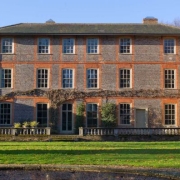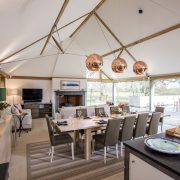Planning permission: the good, the bad, and the ugly. Part 1
Finding a stunning Tudor house to call home or a charming thatched cottage of your dreams is one thing. Finding out that it’s listed is quite another. Shaun Soanes discusses why “listed” doesn’t have to ring alarm bells and why securing planning permission is absolutely possible.
The older a building is, the more likely it is to be listed. From grand manor houses to thatched cottages, there are listed buildings across the nation which all come with a certain degree of prestige. You’re not just buying a new house, you’re buying a piece of the country’s heritage.
Listed status is given to buildings to mark their historic interest and to prevent them from any damage that may detract from that.
A building must satisfy various criteria in order to become listed. Grade I requires “exceptional interest, Grade II denotes structures of “special interest”, and Grade II* “more than special interest”. It’s a special club to be a part of. But as much as you may adore the quirks of an older building, you’ll be likely to need to carry out renovations at some point or another, big or small. This is where things can get quite complicated, making it vital that you take action with caution, because carrying out unauthorised work on a grade listed building is a criminal offence.
Planning permission
Carrying out alterations to a listed building both inside and out isn’t as straightforward as it would be for a non-listed building. To stay within the law, you have to have secure planning permission, consulting with your local authority to do so.
You can’t go through any work on a listed building until you’ve gone through the necessary procedures. This might all sound daunting, but securing planning permission is very possible. Although it can be difficult, it isn’t something to be put off by. It’s a case of going through the process in the right way, the first time around.
Much of it is about having time and patience – your application has to be accompanied by detailed drawings of your plan as well, so it’s often best to get the help of architects and professionals to make the process run smoothly.
What you can and can’t do
Each listed building is judged differently when it comes to what you want to do, but bear in mind that English Heritage have confirmed that up to 90% of listed building consent applications are approved.
Listing can cover a whole building from interior to exterior, unless there are specific parts excluded in the list description. It can also include other attached fixtures and structures, extensions and pre-1948 buildings on the attached land. So keep in mind that when a building is listed, consent is required for work that will alter it internally, or its external appearance. This doesn’t mean that nothing can ever be altered, but it does mean that inappropriate work isn’t allows to be carried out. For example, you wouldn’t be able to use breeze blocks and cement mortar to fill holes in Tudor lath and timber. You also usually need consent for replacing windows and doors, removing internal walls and changing fireplaces.
Your local authority conservation officer will be able to advise you on this.
When planning goes right
At NJ Architects, we often work with clients on listed homes.
The NJ Architects team recently provided help to the owners of a Grade II listed home to secure planning permission for a big development, including extension modernisation and improvement work. The planning and proposals see the development increase by more than 8,800 square ft to a whopping total of 15,600 square ft.
We have been able to guide the owners of all of our restoration projects along the most practical, feasible and cost-effective path to updating their property, whilst abiding by the rules and regulations.
If you have a listed property you want to make changes to or are considering buying one, feel free to contact us. After all, by far the most sensible strategy is to work with architects, designers and service engineers to make your vision practical as well as admissible.
By entering into a constructive dialogue with the planning authorities, a fusion of the old and the new is very possible.




 Bentinck House
Bentinck House

